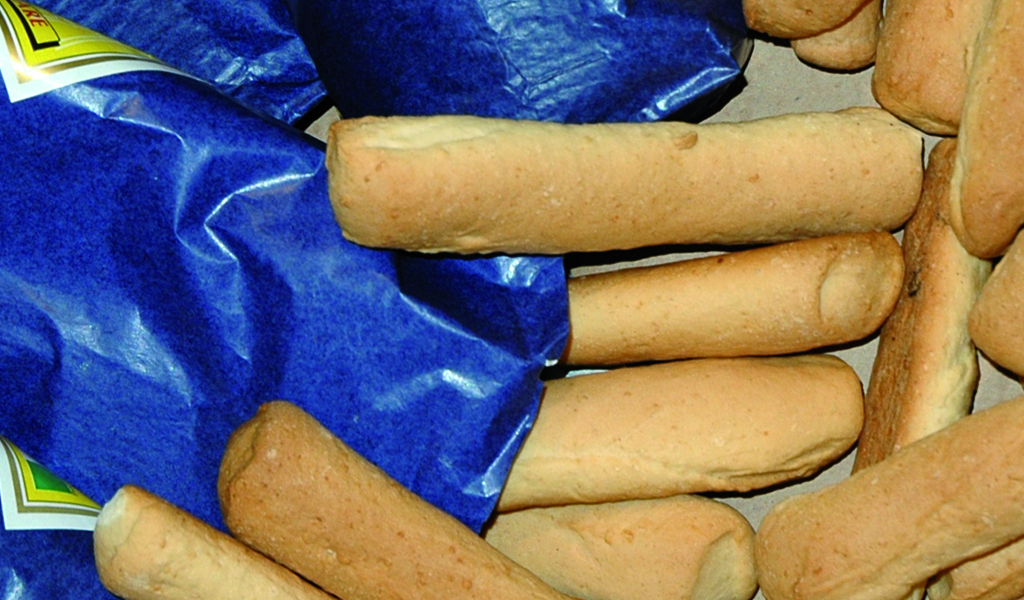Prodotti tradizionali
Biscotti di Castellammare

La storia dei biscotti di Castellammare, località costiera della provincia di Napoli, è molto antica e ricca di fascino. Pare che la ricetta di questi gustosi biscotti sia stata creata nel XIX secolo da una famiglia di produttori locali, che ne custodirono gelosamente il segreto, tramandandosela di padre in figlio, fino al verificarsi, nel secolo scorso, di una serie di morti violente e misteriose, dovute ai continui rifiuti, da parte dei proprietari, di venderla. Probabilmente lo zampino della fantasia popolare ha fatto si che collegassero vicende che non avevano alcun nesso fra di loro, ma che sicuramente hanno contribuito a far crescere l'interesse intorno a questi deliziosi biscotti a forma di sigaro che oggi vengono prodotti e commercializzati al livello industriale secondo l'antica ricetta che prevede l'utilizzo di farina, zucchero e aromi naturali, il tutto lievitato naturalmente e cotto al forno. La forma tipica è allungata, o ad anellini, o a freselline, e ancora oggi vengono impacchettati nella stessa carta azzurra utilizzata un tempo dai pastai della vicina Gragnano. I biscotti di Castellammare si possono mangiare bagnati nella famosissima Acqua della Madonna la cui sorgente si trova nella stessa Castellamare.
The history of the biscuits from Castellamare, a town on the coast near Naples, is very ancient and full of charm. It seems that the recipe of these delicious biscuits was created by a local family in the 19th century and jealously guarded through generations until during the last century a series of mysterious and brutal deaths in this family were caused by the refusal to sell the recipe. Maybe it was fanciful imagination that put the unrelated events together, but it surely helped to create an interest about the delicious cigar-like biscuits that are now produced on a industrial basis. The ancient recipe requires flour, sugar and natural aromas, the whole of which is levitated naturally and baked in an oven. The typical shapes are either long or little rings called "freselline", and are still packed in the blue paper used by the pasta-makers from Grangnano. The Castellamare biscuits can be eaten soaked in Acqua della Madonna, whose springhead is also found in Castellamare.